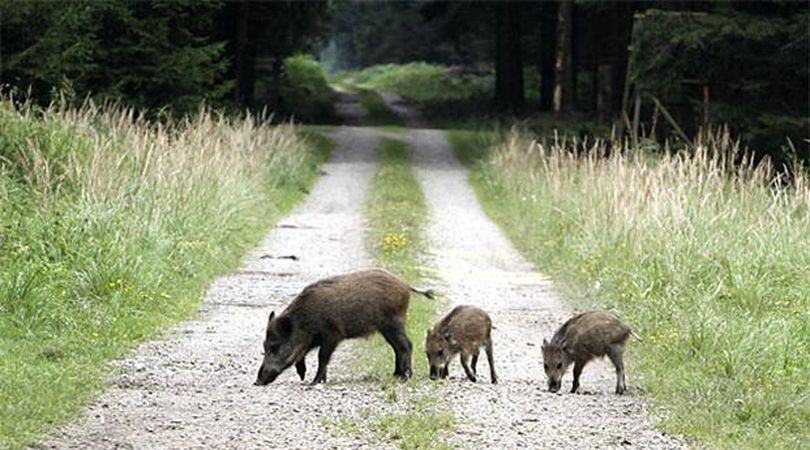Chernobyl radiation still impacts wildlife…

Good morning, Netizens...
AP Photo: A boar family sniffs for bugs and grubs on a gravel road in Eglharting, Germany. Almost a quarter century after the Chernobyl nuclear meltdown in Ukraine, thousands of boar shot by German hunters show excessive levels of radioactivity. According to the AP, unlike other wild game, boars often feed on mushrooms and truffles which tend to store radioactivity and they plow through the contaminated soil with their snouts, experts say. Cesium-124, one of the byproducts of the Chernobyl meltdown, has a half-life of 30 years, which implies it will be around for a few more years.
Since this story broke, and upon doing a brief bit of additional research, I have since found that boars are not the only wildlife that have high levels of radiation.
Wild birds, deer and free-ranging cattle throughout portions of Europe all still bear some of the radioactive byproducts left over from Chernobyl and thus are hazardous to consume.
Dave